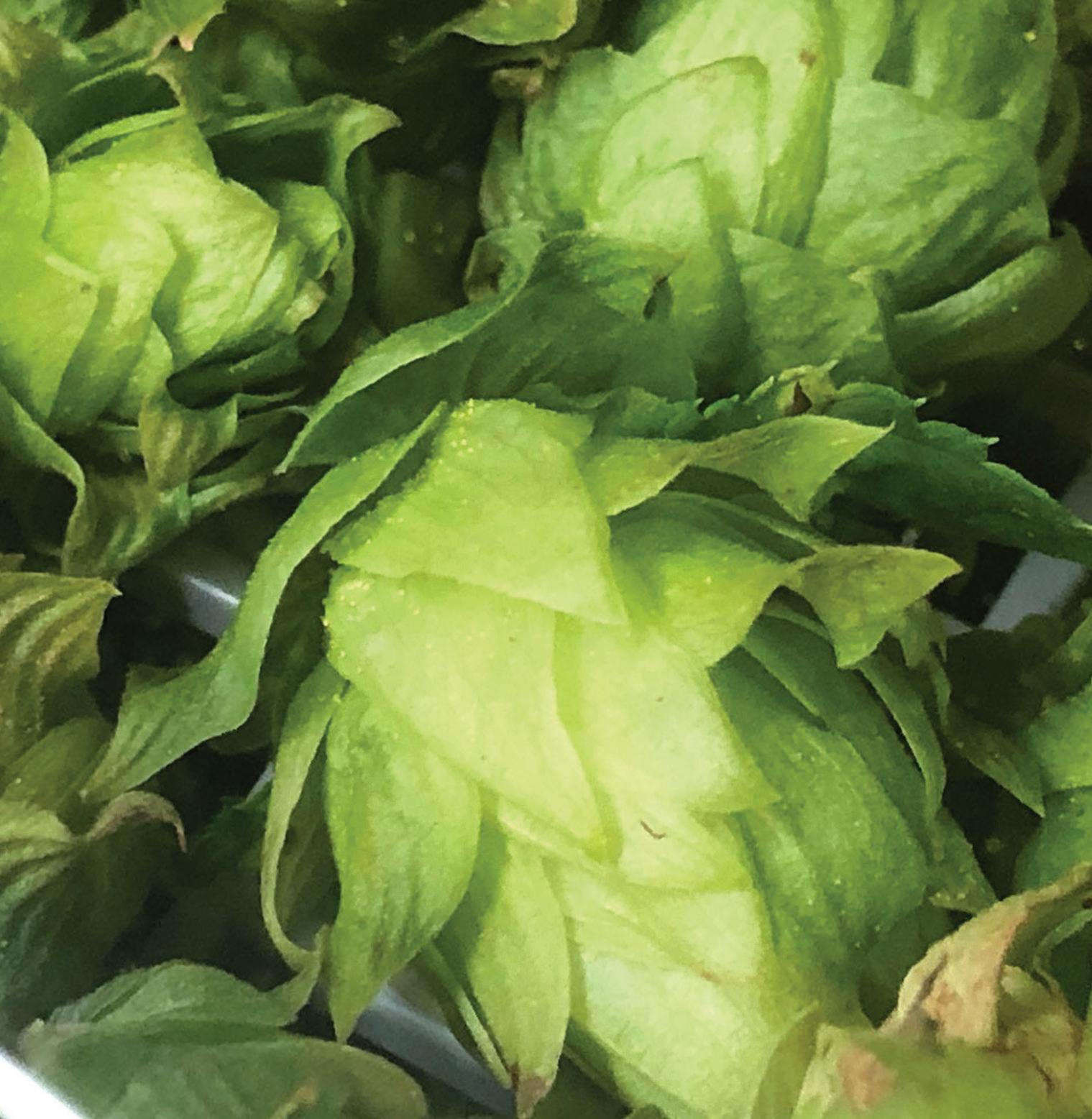
9 minute read
GOOD EATS
No-bake nibbles
It’s summer! Who wants to turn on the oven just so you can enjoy a little dessert?
RECIPES AND PHOTOGRAPHS BY CATHERINE MURRAY
CANNOLI CONES
Prep: 20 minutes | Servings: 12 1¼ cups mini chocolate chips, divided 12 sugar cones 8 ounces whole-milk ricotta 8 ounces cream cheese, softened to room temperature ½ teaspoon vanilla extract ½ cup heavy cream ¾ cup powdered sugar 1 teaspoon cinnamon
In a small, microwave-safe bowl that’s wide enough to dip the opening of a cone into, pour ½ cup of the mini chocolate chips. Microwave in 30-second increments, stirring after each time, until just melted. Dip each cone in melted chocolate. Stand the cones upright in tall drinking glasses to let the chocolate solidify. If ricotta is watery, drain through cheesecloth, squeezing out excess liquid. In a large bowl with a mixer, beat cream cheese, ricotta, and vanilla extract. Gradually add heavy cream and beat until light and fluffy. Slowly incorporate powdered sugar and cinnamon until smooth. Fold in ½ cup of mini chocolate chips. Transfer mixture into a piping bag and pipe into cones. Top with remaining mini chocolate chips.
Per serving: 399 calories, 23 grams fat (14 grams saturated fat), 70 milligrams cholesterol, 225 milligrams sodium, 36 grams total carbohydrates, 0 grams fiber, 12 grams protein.
Prep: 30 minutes | Servings: 6 TOPPING ¾ cup sliced almonds 2/3 cup flour ¼ cup sugar ¼ cup packed brown sugar ¼ teaspoon cinnamon ¼ teaspoon salt 6 tablespoons unsalted butter, melted ½ teaspoon vanilla extract ½ cup oats
FILLING 2 pounds sweet cherries (fresh or frozen) 1 tablespoon lemon juice 1 teaspoon vanilla extract ½ teaspoon almond extract ½ cup sugar ½ teaspoon salt 2 to 3 tablespoons cornstarch
Note: This dessert can also be made over a campfire! To make the topping: Finely chop ¼ cup of the sliced almonds. In a medium bowl, mix the chopped almonds, flour, sugar, brown sugar, cinnamon, and salt. Stir in melted butter and vanilla until the mixture easily crumbles. Mix in oats and remaining almonds. In a medium cast-iron or nonstick skillet over medium-high heat, toast almond/butter mixture, stirring regularly to keep from burning. Once golden and crisp (about 5 minutes), transfer back to bowl and set aside. To make the filling: Wipe off skillet and put back on stove. Add cherries, lemon juice, vanilla, and almond extract. Cook over medium-high heat until cherries are warmed. Meanwhile, in a small bowl, combine sugar, salt, and cornstarch (2 tablespoons for fresh cherries, 3 for frozen). Add sugar mixture to cherries and continue stirring regularly until cherry juice thickens to a nice syrup consistency, about 10 minutes. Let cool 15 minutes, then spread almond topping evenly over cherries. Garnish with whipped cream if desired and serve.
Per serving: 552 calories, 18 grams fat (8 grams saturated fat), 31 milligrams cholesterol, 403 grams sodium, 94 grams total carbohydrates, 3.5 grams fiber, 5.5 grams protein. UNICORN BARK
Prep: 25 minutes | Chill: 1 hour | Servings: 20 12 ounces bright pink candy melts 6 ounces turquoise candy melts 6 ounces lavender candy melts ¼ cup pastel sprinkles 6 ounces white candy melts Notes: The candy melts should be vanilla flavored. Candy will lose its consistency and may not re-solidify if overheated or liquid is added (such as food coloring or milk.) Get creative with the theme of your bark, like red, white, and blue melts for the Fourth of July, superhero bark, peppermint bark, rainbow bark, s’mores bark … the options are endless! Place parchment paper onto a baking sheet and set aside. Pour each color of candy melts into a separate microwave safe bowl and microwave according to package directions. Using a large spoon or spatula, drop a dollop of melted white candy on each corner of the parchment paper and one in the center. With a clean spoon, intersperse dollops of the remaining colors in between the white. Use a flat icing spatula to slowly draw lines through all the colors, blending to create a marbling effect. Drizzle any leftover melted candy across the top. While it’s still tacky, garnish with sprinkles, then let cool at room temperature for 10 minutes. Cover loosely with parchment and place in freezer for 1 hour. Break or cut into pieces of bark. Store in a sealed container.
Per serving: 210 calories, 12 grams fat (11 grams saturated fat), 35 milligrams sodium, 0 grams cholesterol, 27 grams total carbohydrates, 0 grams fiber, 0 grams protein.


Coshocton Hops

BY SHELLY THOMPSON
Alove for beer, agriculture, and their hometown led Jared and Jandi Adams to begin Coshocton Hops, a small hop farm located in their native Coshocton County.
Growing hops wasn’t an endeavor that happened overnight. It began with Jared’s enthusiasm for home brewing and his collaboration with a few friends who had small, one-off brewing systems in their garages or basements. Jared has a knack for the chemistry side of brewing a good beer — and rightfully so, as he’s the plant manager for the local ethanol plant, brewing grain alcohol on a much larger scale. Prior to coming back to Coshocton, Jared and Jandi had purchased property in the county, knowing they would always land back home eventually. Their careers took them to Columbus for a while, and the craft beer industry was their outlet and relaxation time. They enjoyed visiting breweries wherever they traveled and interacting with the people who created the unique concoctions. Since hops are an integral part of brewing beer, and their background, knowledge, and experience lent itself to some type of agriculture, they decided to try growing hops.
Even though they were familiar with brewing beer and agriculture, Jared and Jandi knew they had a lot to learn when it came to growing hops. In 2013, they attended a conference for hop growers hosted by Ohio State University at the Wooster campus. There were several large Michigan growers sharing their experiences with the group. Growing hops in the midwest was still a new idea, and it looked to be a viable crop for Ohio. A few conferences later, it was common for sessions to have titles such as “All the reasons NOT to grow hops commercially.” Although viable, the Ohio climate is not ideal for growers.
The best asset of these conferences was the people, who later formed the Ohio Hop Growers Guild. Attendees as well as presenters would share insights on what type of plants grew well, how much fertilizer was needed and when to apply it, along with other tips and tricks of the trade. The goal was for all of the hop growers to be successful, as well as learn how to market their product to sell to breweries. The Adamses began with two plants of twelve different varieties. Some of the initial plants are still growing in that original plot and are scheduled to be relocated to expand their yard further in the coming years. They currently have one acre of hops, but are replanting about a quarter of that to varieties that are better suited to our area.
Hops can’t just be planted anywhere. Before planting, the soil must be tested. Hops are nitrogen lovers and need more nitrogen than what our Ohio soil can produce organically. Hence, a nitrogen source must be added throughout the growing season. A good water source is also necessary, as the plants need plenty during different times of the year. But they can’t have wet feet or roots, so sufficient drainage is also necessary. They have to be planted in direct sunlight, and a trellis and fertigation system needs to be in place before planting. They are a perennial plant that grows over 20 feet high up a system of coir wire. There are also many challenges with

Jared and Jandi Adams
Continued from page 21 pests and disease, and the plants can take up to three years to mature to full yields. The main resource needed to grow hops successfully is labor, and not just tractor-driving labor, but stoop labor. Growers must walk the yards several times per week to check for potential pests or disease that could wipe out a crop in less than a week. Jandi says that Jared’s parents were their biggest help setting up the hop yard. They were there every weekend, tying ropes, pruning, training, and hand-weeding. Jared and Jandi also have an old 8N tractor that had been in Jared’s family for generations that is used primarily for spraying, tillage, and fertilizing. Having their applicators license for pesticides, which requires minimum training and testing, is another element that is almost a must. Hop yards can look different from place to place. Some use galvanized poles for their trellis system, while many others use old wooden electric poles to connect cables and twine in their set-up. Jared and Jandi wanted to focus on organic methods to start if at all possible and use their own resources where they could to save money. They cut down, shaped, and hoisted over 70 black locust trees from their property to erect their self-described “rustic” hop yard. Unfortunately, the disease pressure in our area is just too high, and Jared and Jandi decided to forfeit the organic route. With that being said, they are excited to see how well the plants respond to some of the fungal applications to further the success of the plants. There are many resources that were beneficial to the Adamses in their process of starting a hop yard, such as the local Farm Bureau and local OSU Extension agencies. Much of their research came from academia and test plots at OSU campuses. Being a member of the Ohio Hop Growers Guild (OHGG) was invaluable. It’s not always easy to be able to sell your hops, and the OHGG combines a database of local hops to put in front of brewers so that the hop growers can combine yields. Many hop forums and Facebook groups were wonderful resources as well. They also keep in touch with and have associate membership to the Ohio Craft Brewers Association (OCBA). OHGG and OCBA have a great collaboration that helps both growers and brewers. When describing the hops industry, it’s easy to list all the challenges and hardships in growing. But Jared and Jandi say they’ve met some amazing, hard-working, supportive people in the industry. And the community has been full of resources and support as well. Their name, Coshocton Hops, pays tribute to their hometown, and they have a lot of pride in Coshocton and the amenities and natural resources available. They’ve had numerous opportunities elsewhere, but never considered leaving for a second. Although growing hops has been a challenge, the best reward is getting that cold glass of tasty craft beer. The end result is quite worthwhile.

Cardinal Generating Plant tour coming soon
Once again, we will be offering Frontier Power members an all-day trip to Brilliant, Ohio, to tour the Cardinal Generating Plant. This informative tour does require periods of walking and stair-climbing, so you must be in relatively good health to attend and must wear comfortable, flat shoes. Although the final date of the tour has not been determined, it will take place in September. If interested in attending, please contact Kelly at 740-623-3212. Please watch for further details in an upcoming edition of Ohio Cooperative Living.






